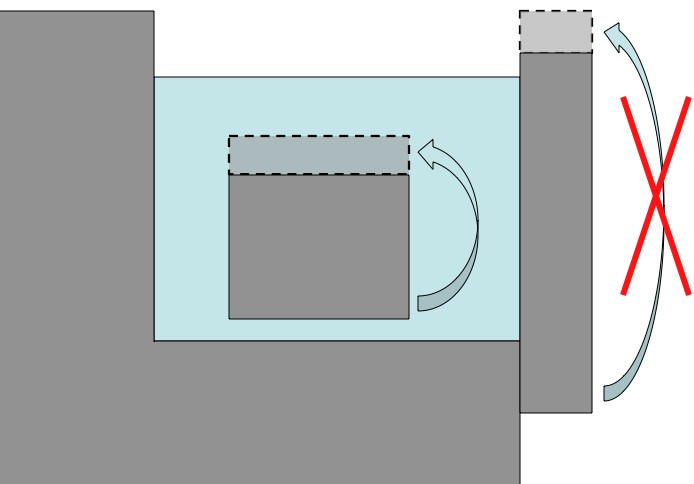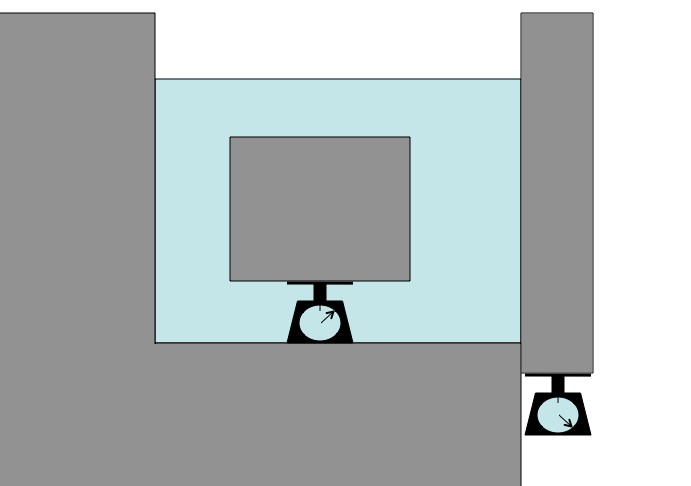The original question was: I know that the buoyant force on an object equals the weight of the liquid that it displaces. However, I have some questions as to what it means to ‘displace’ a liquid, for example, does an object that rises vertically from the floor of a pool to the surface of the water, such as the very wall of the pool, displace the water and therefore have a buoyant force exerted on it? For that matter, does a shoreline displace the ocean?
If this is true, as I think it is, that an object has buoyancy even if there is no liquid directly below it, then where does the force come from? I have always imagined that buoyancy originates from particles of the higher density liquid pushing against the bottom of the submerged object. However, this doesn’t really make sense, because I know a kickboard will always float to the surface of the water even if you attempt to push it all the way to the bottom.
Can you help me understand how this works?
Physicist: All that gravity wants to do is get as much matter as low as it can.

Counter balance scales: Despite the lighter side of the scale being elevated (seemingly defying gravity) there's still a net lowering of mass because the heavier side drops. But, it doesn't drop as fast as it would with no counter weight.
Normally things can just fall, but if there’s a fluid in the way, everything needs to be rearranged. For example, as a lead weight sinks in water it’s forcing the water just below it to be moved just above it. Although there is some mass being moved upward (the water) the net result is that more mass is moved lower, so the lead sinks.

An immersed object displaces water as it rises and falls. As it falls some amount of water has to be elevated. So, the total amount of matter moving downward is less than it is for the same amount of moving matter that's not in water. As a result, the immersed object feels less total downward force.
Similarly, the kickboard will float to the surface because as it moves up the water just above it is moved to just below and, since the water is more dense, the net result is that more mass is moved lower. If you could somehow get the kickboard absolutely flush against the bottom of a pool it should stay there, but that’s really hard to do. Maybe with a flat board, and a flat, non-porous pool floor?
Buoyancy can also be derived in terms of the difference in pressures between the top and bottom of an object. The deeper you are in water, the higher the pressure. So the bottom of an object is always subject to a higher pressure than the top, resulting a net upward force.
In either case, if there’s no water below an object, there shouldn’t be any buoyant force.

Objects surrounded by water are subject to the buoyant force, but mere contact with water isn't enough.
Personally, I find the counter-balance analogy easier to think about. For example, it’s easier to understand why the water displaced by a boat weights exactly as much as the boat itself, from a counter-balance point of view. But the pressure-difference approach works exactly as well, and ultimately is a “safer” way to do the math. They give you exactly the same answers, they’re just two different ways of looking at the situation.







Objects that sit flatly on the bottom of a pool do weigh less than if out of water but have no water beneath them as testing confirms. This contradicts your above statement of objects requiring fluid beneath them to experience buoyant forces.
If an object sits flatly on the bottom of a pool, it still has 3 dimensions, which means the buoyant force acts on the the sides of the object, rather than the sides AND below it.
Pingback: On the Precipice… | Jessa Jay